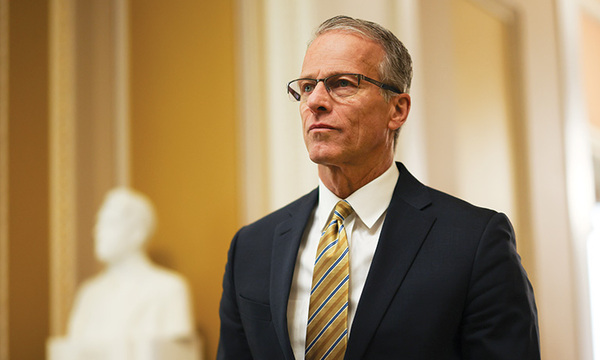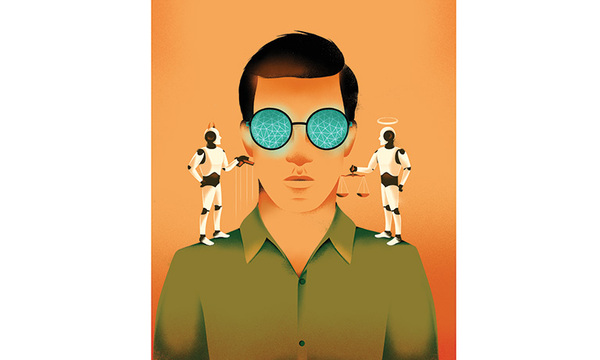Chances are good that very few Biolans have ever heard of the Tawbuid — a small indigenous tribe in Mindoro, an island in the Philippines. But among some Tawbuid, “Biola” is a word that is surprisingly familiar, thanks to the work of one professor who has devoted much of his academic life to studying and recording their culture.
Doug Pennoyer, anthropologist and dean of Biola’s Cook School of Intercultural Studies, did his doctoral research among the eastern Tawbuid back in 1973, recording hours of oral history and tribal chants and doing an ethnobotany analysis of the culture.
Last March and April, 2012, nearly 40 years after his initial encounter with the Tawbuid, Pennoyer returned, reconnecting with the people group that decades earlier had captured his heart and inspired his academic pursuits.
1973
As a young anthropologist working on his doctorate at Washington State in 1973, Pennoyer — who grew up in the Philippines as a missionary kid — went to Mindoro hoping to crack the culture of the most isolated, primitive tribes of Tawbuid in the island’s interior.

Like a scene out of Indiana Jones, Pennoyer — then 27 — hacked his way through the jungle to reach the interior Tawbuid, but did not receive the welcome he had hoped for. When he arrived, terrified women and children ran in the opposite direction. The men in the tribe cursed him, threatened him with fish spears and threw him out of their villages. In one village he was allowed to stay, though the abandoned hut where he was housed — bamboo floor, bark walls, grass rugs — was teeming with cockroaches.
When Pennoyer looked out from a hole in of torch-wielding tribesman approaching, shouting seven-syllable rhyming chants and curses, he could feel the demonic forces around him. It was time to go.
Pennoyer decided to give up on the hostile interior tribes and instead conduct his field research with a group of 70 Tawbuid
who were recently Christianized, thanks to a pair of Overseas Missionary Fellowship missionaries who had brought the gospel to the tribe a decade earlier.
This group of Tawbuid, who had a church and elders, were much more welcoming to Pennoyer. They helped him understand why the interior tribes were so fearful of him. Over the course of his ethnographic research there, Pennoyer forged a lasting bond with the community. He became the “keeper of voices” for the tribe, recording over 50 hours of oral literature, songs and spirit chants.
Pennoyer’s time with the Christianized Tawbuid was crucial to his doctoral dissertation and helped launch his academic career as the only anthropologist to ever work with the eastern Tawbuid.
2012
Ten years after his initial encounter with the Tawbuid, Pennoyer returned in 1983 for a brief visit to the same Christianized group he had worked with as a doctoral student. But that was the last time he saw them until this year’s sabbatical trip in March and April.
Nearly 30 years had passed since Pennoyer had last interacted with the Tawbuid community, and much had changed. The community that was only newly Christianized in 1973 had now grown into a thriving community of faith, complete with multiple church buildings and worship services held twice a day (mimicking the Tawbuid’s pre-Christian routine of chanting to ancestors and evil spirits twice a day). The New Testament had been fully translated, pastors had been trained, and education and literacy were being achieved. The village had also built a cement drainage system and had clean water.

In spite of all these changes, many in the village recognized Pennoyer and recalled stories of his visit there in 1973 and 1983. Pennoyer was surprised to find that there were kids in the village who had been named “Doug” after him.
Pennoyer enjoyed seeing familiar faces — much older now — and meeting the children and grandchildren of some of the original Tawbuid informants and assistants who had helped him with his doctoral research.
“It was this overwhelming sense of gratitude,” said Pennoyer, describing the emotions he felt in revisiting the Tawbuid community after all these years. “When I spoke in the church I would begin to tear up, looking around the audience, realizing I owed these people my professional career.”
At nights during his stay, Pennoyer showed a PowerPoint presentation full of pictures, audio of folklore/chants and digitized Super 8 video he had taken in 1973 and 1983. The Tawbuid enjoyed seeing glimpses of how their village used to be, what their parents and grandparents looked and sounded like, and how much had changed.
“I realized I probably possess more knowledge than most of the people about their old way of life, several generations later,” noted Pennoyer. “In a weird sort of way I’m a Tawbuid expert more than some of these young people are, who are so far removed from the darkness of their ancestors.”

Pennoyer also trekked through the muddy jungles — rappelling with vines at times — to visit five remote churches in the community. In some of these areas, villagers remarked that Pennoyer was the first American they’d ever seen. But instead of running from him in fear, they showed him love, wrapping their arms around him “like a hero returned to his home town.”
On the day Pennoyer said goodbye, during the last morning church service in the main village, the Tawbuid handed him a guitar and asked him to sing a song. They remembered how in 1973, Pennoyer spent long stretches at night playing and singing songs in his hut.
Pennoyer chose the Irish ballad “Danny Boy,” and before singing explained the historical background of the song in Tawbuid. He found that it was actually easy to contextualize the song to Tawbuid culture: Themes of hunger, longing, traveling far away and returning to find a lover dead resonated with the experiences of the Tawbuid.
“[Singing ‘Danny Boy’] was for me and for them an interesting way to say goodbye for the time,” said Pennoyer. “They had given me so many stories and now I was giving them a story — one that made sense in their culture.”
'From This Place'
For Pennoyer, the experience of revisiting the community that had made such an impact on his life was powerful. More powerful, though, was witnessing the life-transforming impact of the gospel among the Tawbuid.
It’s a testament to the “from this place” power of gospel proclamation, said Pennoyer, that one determined missionary couple in the post-WWII era could penetrate an unreached people group like the Tawbuid and — over the course of nearly six decades of ministry — help pave the way for so much transformation. One small church had grown to 19 churches among the eastern Tawbuid, the Bible had been translated and a Bible school had even been formed. The fear was gone and demonic worship had vanished. The land was secure and flourishing, and the villages were cooperating in community development planning.
“The end product of proclamation is transformation of an individual life,” said Pennoyer, “but in this case it was transformation of a society.”
Pennoyer is currently working on his sabbatical report and plans to continue to publish articles and possibly a book about the Tawbuid. For him, the story of this people group is a story of transformation from darkness to light; it’s a story he will never tire of telling.
 Biola University
Biola University



